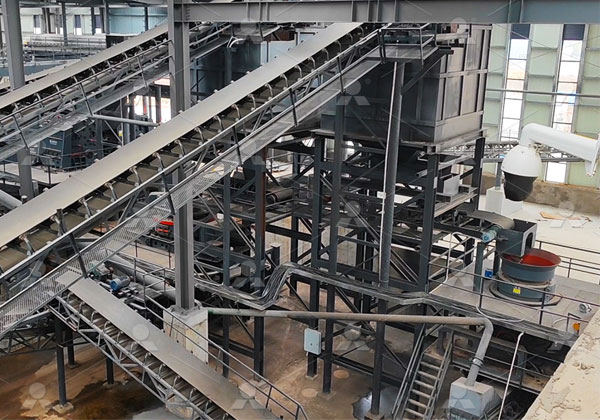Copper ore beneficiation is the process of extracting copper metal from its ores, which often contain impurities. The primary goal of the beneficiation process is to upgrade the ore by removing waste materials and increasing the concentration of copper. A variety of equipment is used for copper ore beneficiation, and each plays a role in different stages of the process. Here is an overview of the equipment commonly employed in copper ore beneficiation projects.

1. Crushers
- Jaw Crushers: Used as the primary crushers, jaw crushers break down large chunks of copper ore into smaller, manageable pieces. The crushing process reduces the ore size, making it suitable for further processing.
- Cone Crushers: After initial reduction, cone crushers are used to further crush the ore to a finer size. These crushers are designed for secondary and tertiary crushing and are typically used to produce finer particles that can be processed in grinding mills.
- Impact Crushers: Sometimes used in copper ore processing to create a finer material, especially for ores that are more brittle or softer.
2. Grinding Mills
- Ball Mills: After crushing, copper ore is ground to a fine powder in ball mills. This grinding process allows for the liberation of valuable copper minerals from the surrounding waste material (gangue). Ball mills use steel balls as the grinding medium to reduce ore size to a fine powder suitable for flotation.
- Rod Mills: In some cases, rod mills are used in place of ball mills. They have long rods inside which grind the ore by impact, grinding it into smaller particles.
3. Flotation Cells
- Flotation Cells: Flotation is the primary method of separating copper from its ore. In this process, flotation cells are used to create air bubbles to which the copper minerals attach, while the waste material sinks. Flotation cells are equipped with agitators to help the air bubbles form, and the ore is mixed with water and chemicals to aid in separation. This is one of the most common and cost-effective methods for copper ore beneficiation.
4. Thickening Equipment
- Thickener: After flotation, the concentrate is often in slurry form. Thickening equipment, such as a thickener, is used to separate excess water from the copper concentrate. The thickener increases the solid content of the slurry and prepares it for further processing.
- Vacuum Filters: To further dewater the concentrate, vacuum filters can be used. These filters help in reducing the moisture content of the concentrate before it is sent for smelting.
5. Dryers
- Rotary Dryers: Copper concentrate usually contains a significant amount of water. After thickening and filtration, rotary dryers are used to remove water and ensure that the concentrate reaches the required moisture level before smelting.
6. Smelting Furnace (for Copper Concentrate)
- Blast Furnaces/ Electric Furnaces: Once the copper concentrate has been prepared through flotation, it is sent to a smelting furnace, where it is heated to high temperatures. This process removes impurities and converts the concentrate into molten copper, known as blister copper.
- Refining Equipment: After smelting, the copper may undergo further refining to remove remaining impurities, often through electrolysis, to produce high-purity copper.
7. Magnetic Separators
- Magnetic Separators: In cases where the copper ore contains magnetic minerals, magnetic separators can be used during the beneficiation process. These machines help remove unwanted magnetic materials, such as iron, from the ore.
8. Conveyors
- Belt Conveyors: Throughout the copper ore beneficiation process, belt conveyors are essential for transporting materials between stages. From feeding ore to crushers, grinding mills, flotation cells, and thickeners, conveyors ensure continuous material handling with minimal interruptions.
Copper ore beneficiation involves a combination of processes, from crushing and grinding to flotation and smelting, requiring a variety of specialized equipment. Each piece of equipment plays an essential role in upgrading the copper ore and ensuring that the end product meets the necessary quality standards for further processing and market use. Effective selection and operation of this equipment are crucial for the efficiency and profitability of a copper ore beneficiation project.

